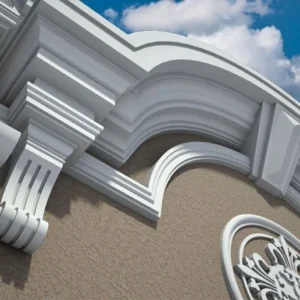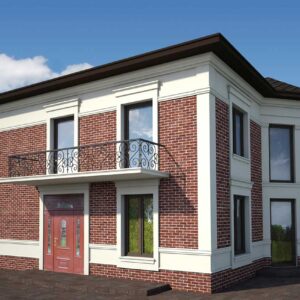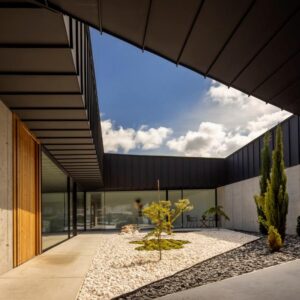Selecting the right home design plan involves more than choosing the layout or the external appearance; it’s about making a choice that deeply affects your day-to-day living. In 2023, the U.S. saw the construction of over 1,450,000 private homes, each reflecting a distinct vision and way of life.
The design you opt for not only molds your everyday activities but also plays a role in determining your mood, how you interact with others and your general happiness. This article will help you consider the essential factors to ensure your new home fits your way of life. It’s about crafting a place where practicality blends with your individual taste, transforming a structure into a living space where you can flourish.

Understand Your Lifestyle Needs
Before you start planning, think about how you live day-to-day. Do you host lots of gatherings, or do you need a quiet space for working from home? If you like a combination of modern and rustic styles, checking out barndominium house plans might be ideal.
These designs are known for their roomy and flexible layouts, which can easily adapt from intimate family gatherings to larger social events without losing comfort or style. If you need a space that can function as a gym or art studio, these plans can accommodate that as well. They’re especially good for people who need their home to adapt quickly to their changing needs.
Assess Your Budget
Your budget is key in deciding which home design you can afford. Begin by setting a realistic budget that covers construction, materials, and unexpected costs. Stick to this budget while looking for a design that fits both your style and your financial situation.
Look into different designs and compare what you get for the price. This will help you choose a plan that balances cost and practicality. Since unexpected expenses can arise during building, include a buffer in your budget. Consider plans that allow for staged construction or future expansion to spread out costs if needed.
Consider Long-Term Flexibility
Choose a home design that can adjust as your life changes. You might need an extra bedroom for kids or a space that can double as a home office. Look for designs with rooms that can be used in different ways and can be easily updated to fit your needs over time. This ensures your home stays useful and comfortable for years.
Such designs not only meet your current needs but also have good resale value because they appeal to buyers looking for flexibility. Consider how each space might be used in the future, like turning a nursery into a study or a dining area into a library.
Energy Efficiency and Sustainability
Energy-efficient options can benefit not only the planet but also your wallet by cutting utility costs. When planning your home design, look for designs that cut energy consumption, such as strategically placing windows to optimize natural lighting, better insulation, and appliances with reduced power usage. Sustainable building materials like recycled wood, bamboo, or concrete also reduce the ecological impact while simultaneously offering strength and aesthetic appeal.
Incorporating these features leads to a home that’s economical and mindful of ecological impact. Additionally, local incentives for eco-friendly construction can offer further monetary gains. Always explore available tax deductions or utility rebates for properties that adhere to specific energy-saving standards.
Aesthetic Alignments
Your home should mirror your individual taste and mesh well with its environment. Pick a style that resonates with your personal preferences, while keeping in mind the natural setting and typical building styles in your area. Whether you lean towards a clean, contemporary design or favor a classic look, make sure that both the outside and inside of your home reflect your style and blend in with the local community.
Integration not only adds curb appeal to your property from the street but also fosters a feeling of community with neighbors. Making sure it fits with your style ensures it feels like home as soon as you enter it.
Consult with Professionals
Even if you already know exactly what your ideal home should look like, seeking advice from professionals should still be part of the equation when creating it. Architects, interior designers, and home builders possess the know-how needed to ensure it is not only visually appealing but also well-built and functional. A landscape architect is another invaluable source of advice; they can use their design preferences for outdoor areas so they align perfectly with those inside.
These experts can transform your concepts into a practical and appealing design that fulfills your needs. Their expertise can help you avoid expensive errors in choosing materials and layouts, making sure every aspect of your house functions well and looks great. Relying on their skills can turn an average house into your ideal home.

Final Thoughts
When picking the right home design, it’s crucial to think about your daily life, what you can afford, and what you might need in the years to come. If you really dive into these details, you can choose a plan that works well now and can also handle what the future might bring.
Keep in mind that the best home design adds value to your life, setting the stage for all the moments you’ll cherish there. Don’t rush, seek advice from professionals, and make the most of your search to design the perfect home.












